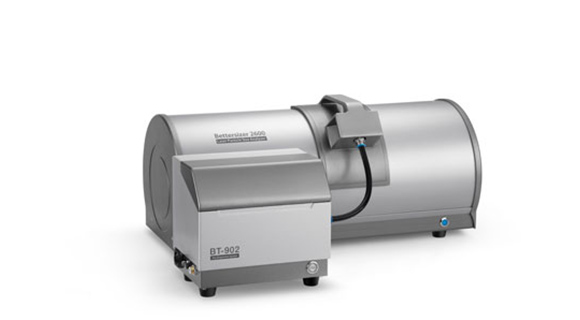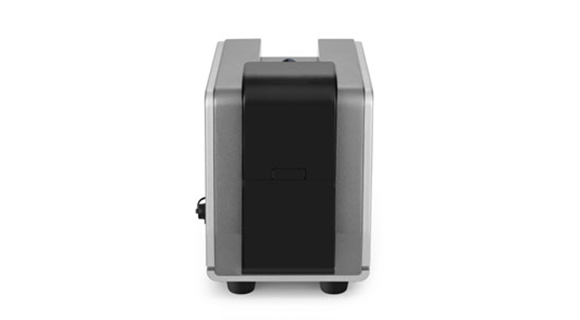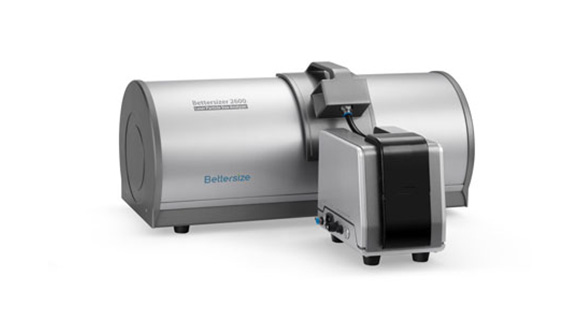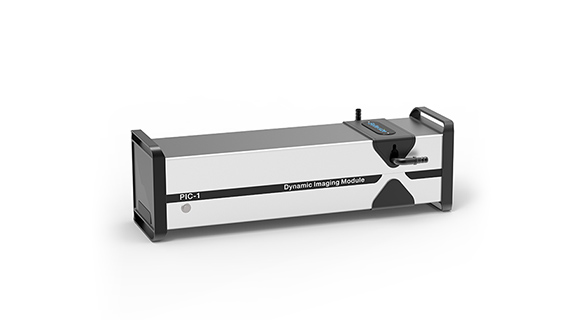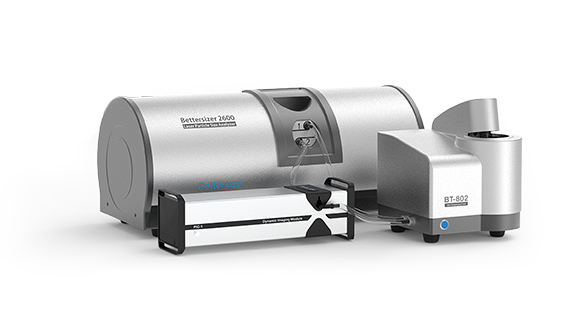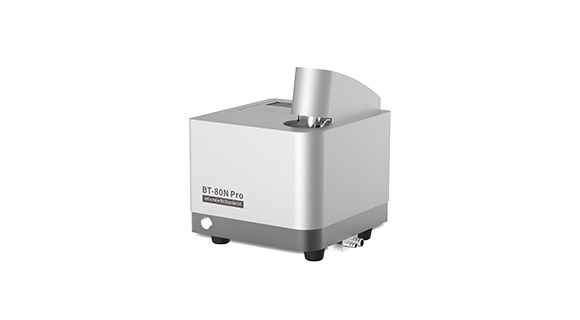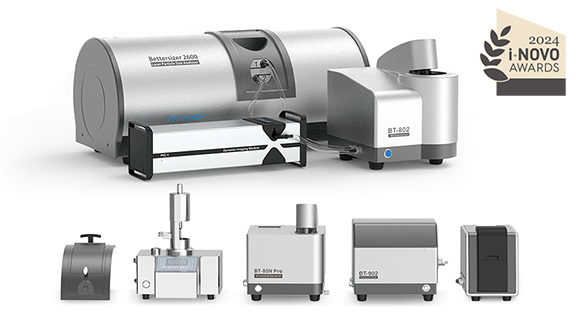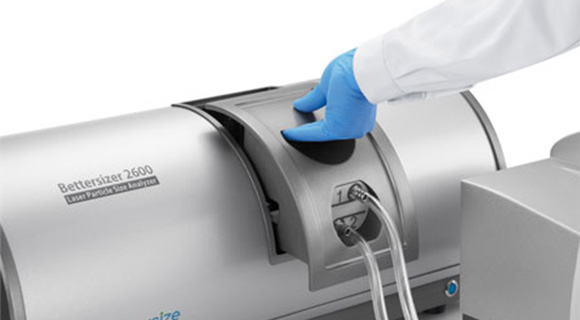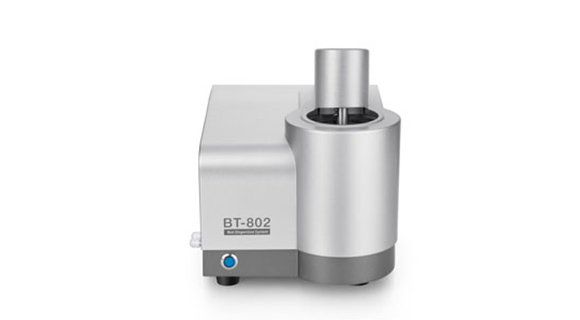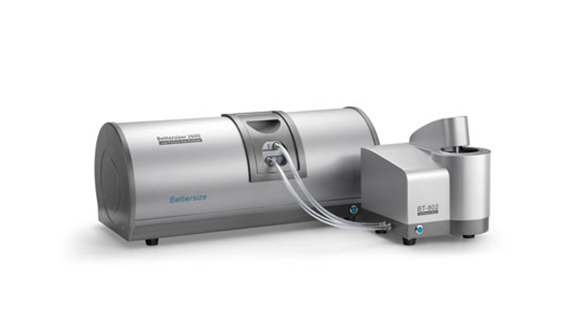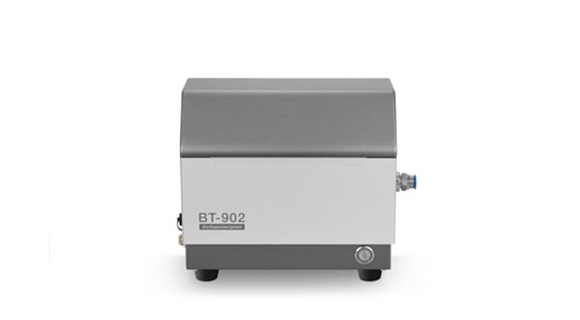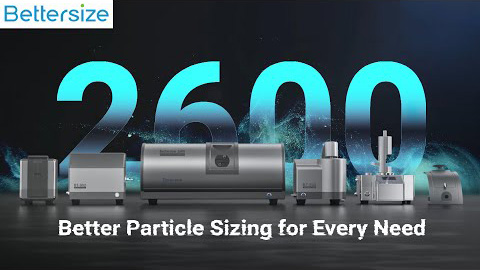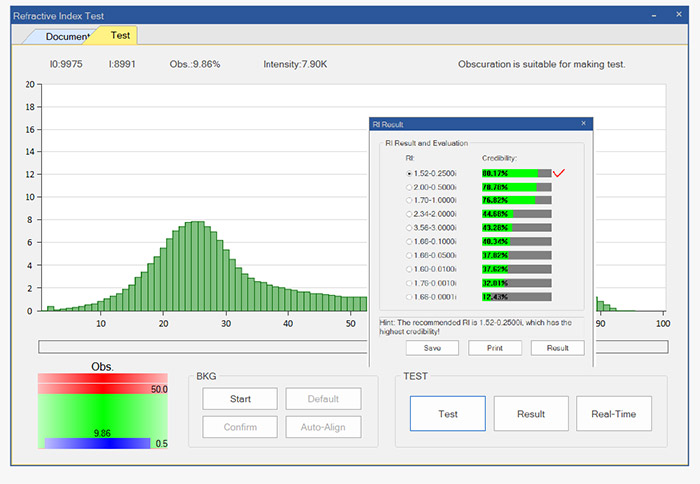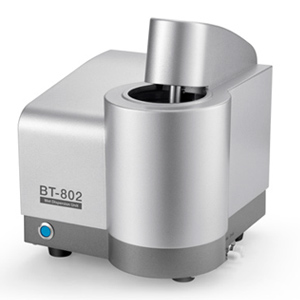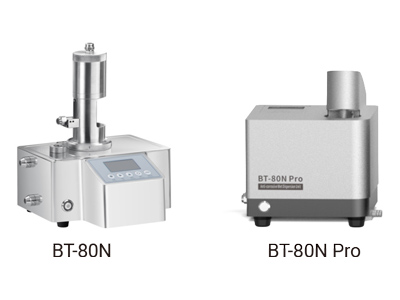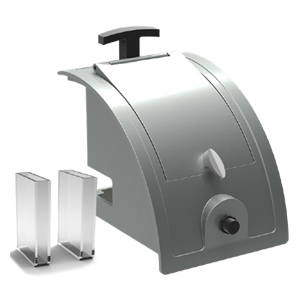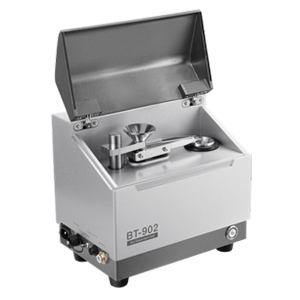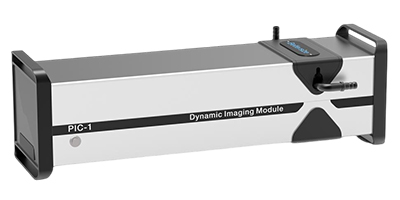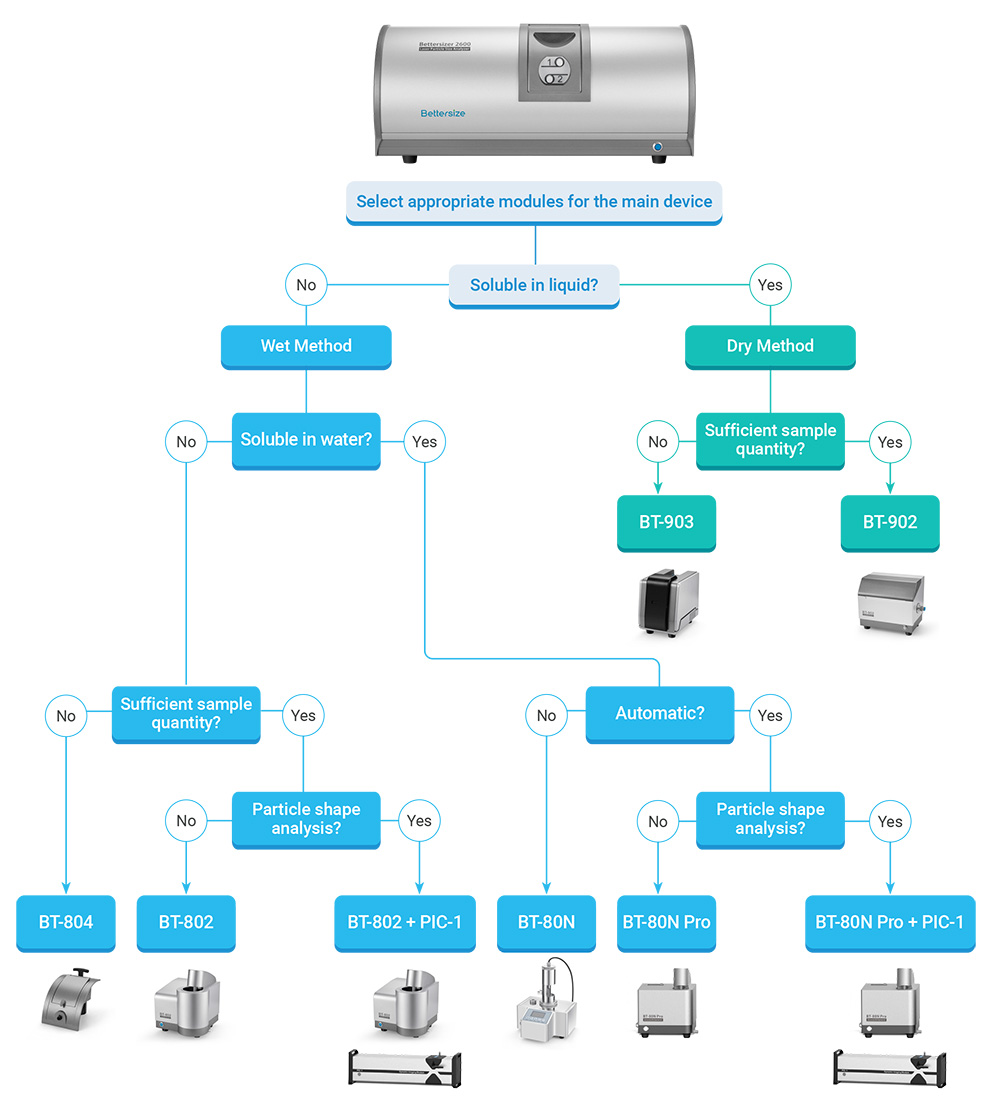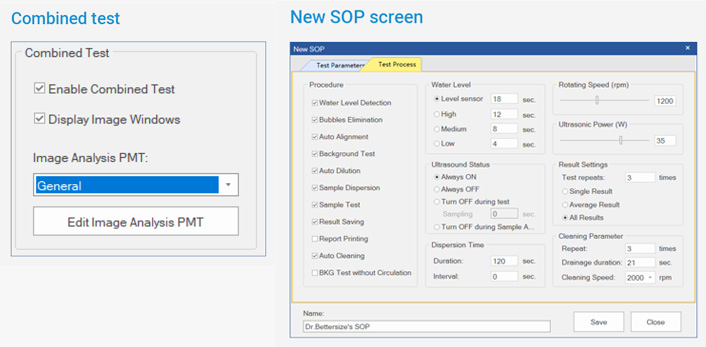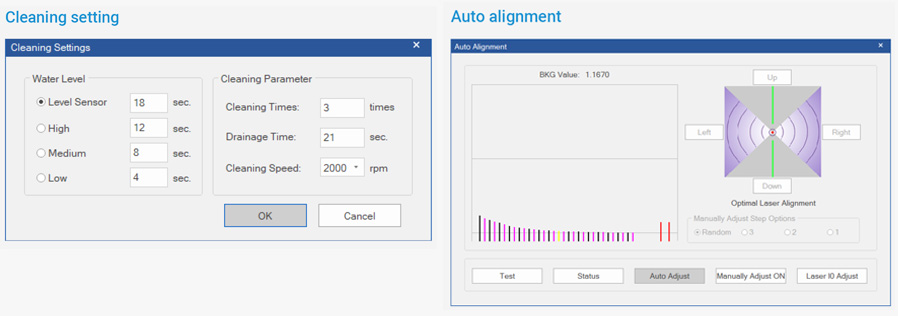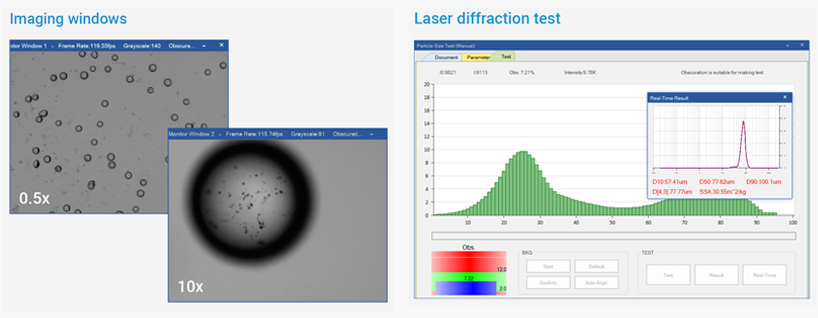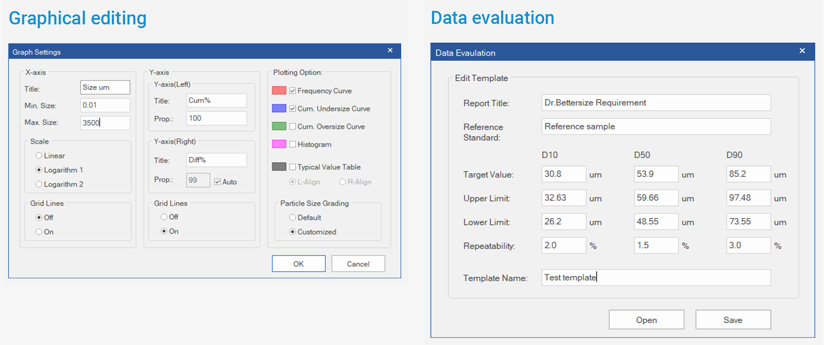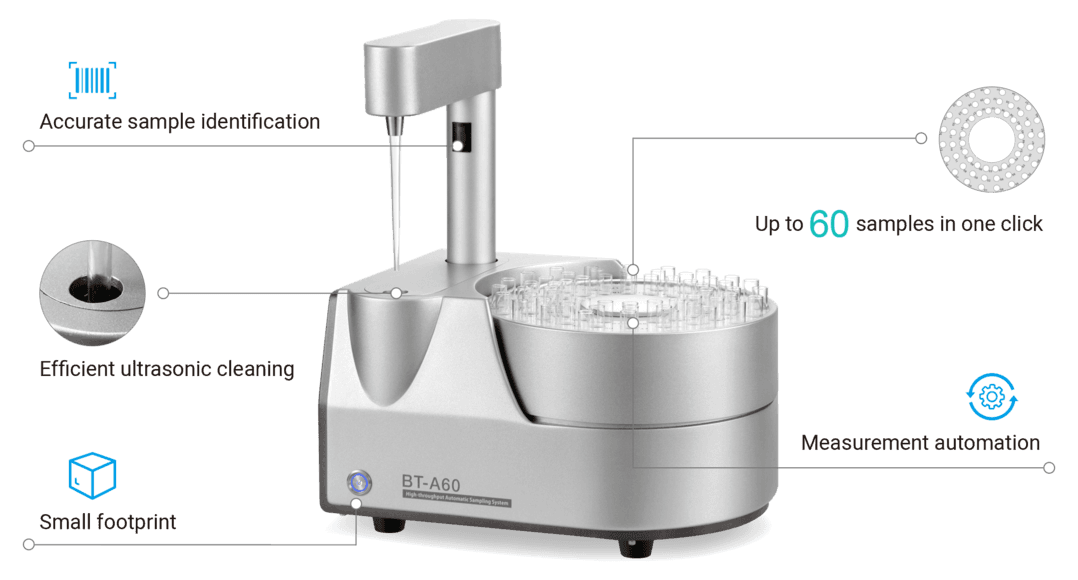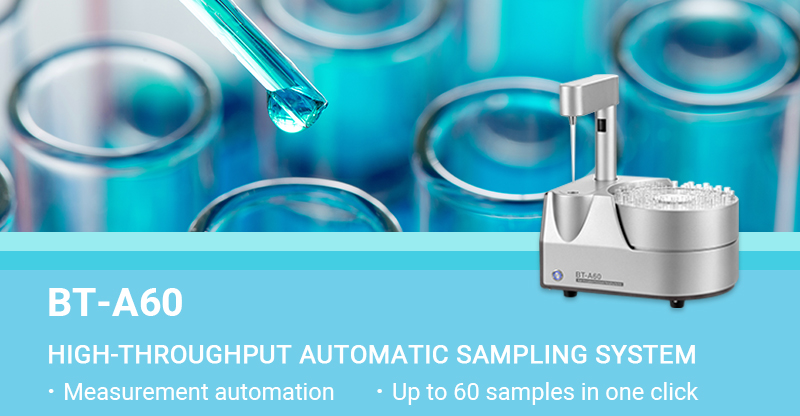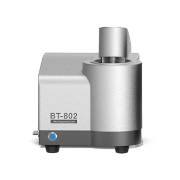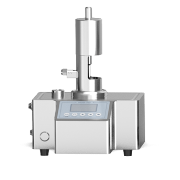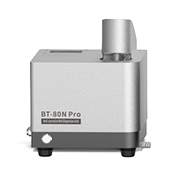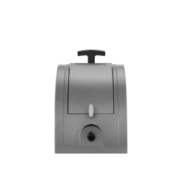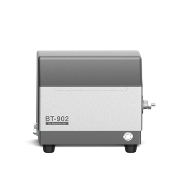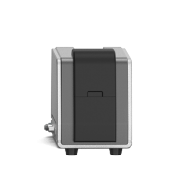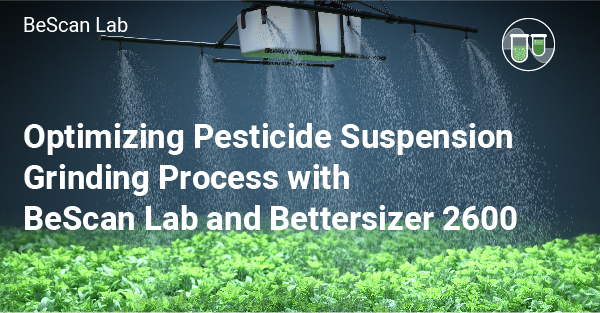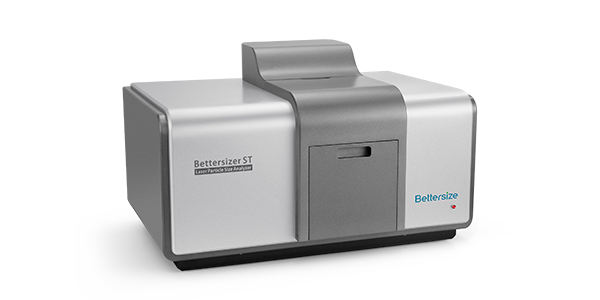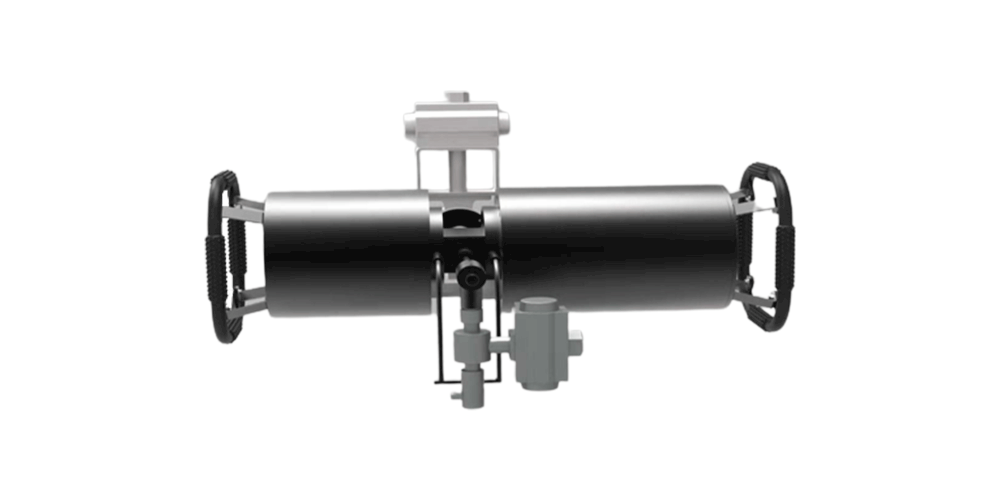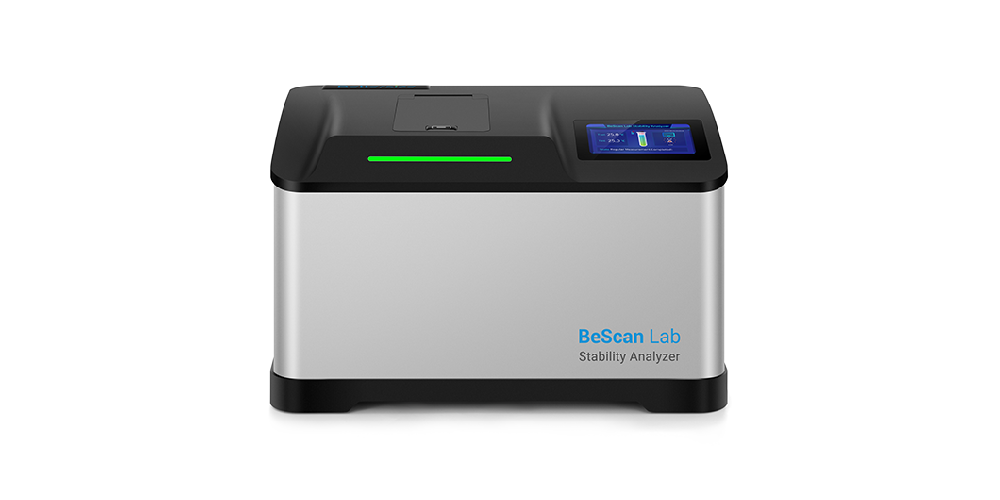Bettersizer 2600
The Bettersizer 2600 utilizes proven Laser Diffraction Technology to measure particle sizes ranging from 0.02 to 2,600 μm. Its modular design provides versatile functionality, with the dynamic imaging module enabling combined laser and imaging tests. This extends the measurement range to 3,500 μm while allowing for both particle size and shape analysis. Additionally, the system's flexible dispersion modules support both dry and wet dispersion methods, catering to a wide range of measurement needs.
Features and Benefits
- ● Wide particle size range: 0.02 to 2,600 μm (wet dispersion); 0.1 to 2,600 μm (dry dispersion); 2.0 to 3,500 μm (dynamic imaging)
- ● Dual optical system: Laser Diffraction and Dynamic Imaging
- ● Advanced laser diffraction system: combination of Fourier and inverse Fourier design
- ● 92 distributed spherical detectors array: detection of light signals from 0.016° to 165°
- ● Auto-alignment of the laser diffraction system: elimination of manual adjustments
- ● Modular dual-camera imaging system: 24 detailed particle parameters
- ● Seamless switching dispersion units: adaptability to both dry and wet methods
- ● User-friendly software: efficiency and ease of use
- ● Compliance with ISO 13320, 21 CFR Part 11, USP <429>, ISO 13322-2
Video
How to Install and Operate Bettersizer 2600 
Bettersizer 2600 | Laser Diffraction Particle Size Analyzer (Wet & Dry) 
Snippet - How to Measure Particle Size of Coffee Powder 
Ask an Expert! Introducing Bettersizer 2600 
A Brief Introduction to Laser Diffraction | Fundamentals of Bettersizer 2600 
Bettersizer 2600 Demonstration with Corundum (Al2O3) sample 
How to Measure Particle Size of Cosmetics 
How to Measure Particle Size of Coffee Powder 
Bettersizer 2600 Overview | Laser Diffraction Particle Size Analyzer (Dry & Wet Dispersions) 
Overview
Features
Dispersion Units
Unit Selection
Software
Specification
Autosampler
Why the Bettersizer 2600?
The Bettersizer 2600 excels in particle analysis through its dual optical systems: laser diffraction and dynamic imaging. The combination of dual optical systems allows for comprehensive particle characterization, making the Bettersizer 2600 a versatile and indispensable tool for advanced particle analysis.
The laser diffraction system, supported by two robust patents, ensures precise and reliable particle size results in compliance with ISO 13320, enabling a wide range of industries and applications to achieve new levels of performance. Owing to its modular design, the Bettersizer 2600 effortlessly integrates a dynamic imaging system, extending the measurement range and providing individual and quantitative particle shape analysis in real time with ISO 13322-2 compliance.
Laser Diffraction System
1. Patented Technologies Driving Instrument Excellence
1.1 Combination of Fourier and Inverse Fourier Design
The Bettersizer 2600 is superior in the combination of Fourier and inverse Fourier design. Its laser system structure features 92 detectors in total, including forward, lateral, and backward detectors. Equipped with a widely distributed spherical detector array, the Bettersizer 2600 can detect light signals across a broad angular range from 0.016° to 165°, enabling precise measurement of both small and large particles.
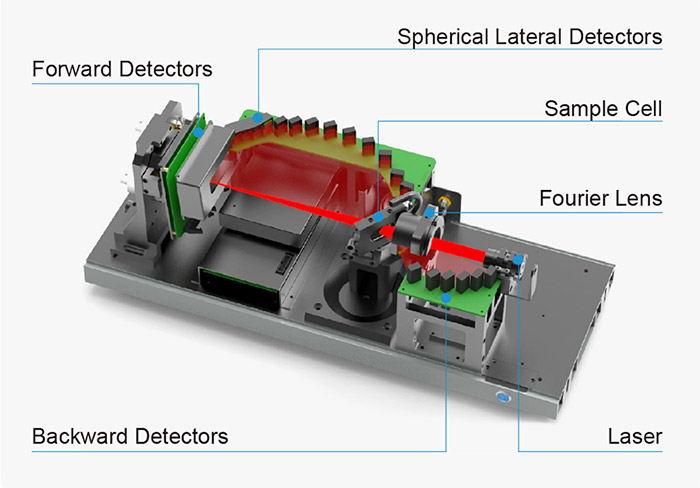
Total internal reflection occurs when the light transitions from a denser medium (glass) to a rarer one (air) and the incidence angle exceeds the critical angle, limiting the angles at which light can escape. The Bettersizer 2600's innovative sample cell, with its tilted design, effectively minimizes total internal reflection. This allows more light signals to reach the detectors, enhancing measurement reliability and ensuring the acquisition of more comprehensive sample information.
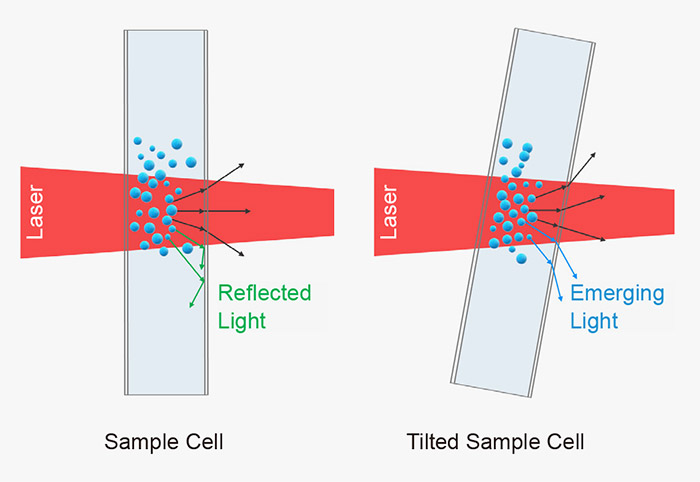
1.2 Refraction Index Measurement
Under Mie theory, measurements by laser diffraction can be particularly challenging for samples due to a variety of factors, including the following:
-
- Samples with completely unknown complex refractive index;
- Samples with heterogeneous chemical composition;
- Samples with significantly different particulate optical properties compared to the bulk material;
- Samples having a distinctly strong optical dispersion (small Abbe number).
| Material | Refractive index (literature) | Refractive index (measured) |
| CaCO3 | (1.53 - 1.65) - 0.1i | 1.62 - 0.1i |
| BaSO4 | 1.65 - 0.1i | 1.68 - 0.1i |
| ZnO | 2.008 - 0.1i | 2.02 - 0.1i |
| Carbon black | 1.88 - 0.55i | 2.02 - 0.1i |
| Al Powder | 1.4 - 3.9i | 1.42 - 3.0i |
| SiO2 – Quartz | 1.54 - 0.00i | 1.54 - 0.01i |
To address these challenges, determining the refractive index is one of the most effective solutions. The Bettersizer 2600 offers the following capabilities:
-
- Determine refractive index for samples with unknown refractive index;
- Measure samples with unknown properties;
- Verify the known data of a material at a specific light wavelength;
- Provide key parameters to calculate particle size distribution in real-time.
2. Superior Performance in Particle Size Analysis
2.1 Wide Measurement Range
Due to the instrument's excellent laser system design with 92 detectors and a very wide angular range from 0.016° to 165°, it achieves a measurement range from 0.02 μm to 2,600 μm, covering both nano and millimeter scales.
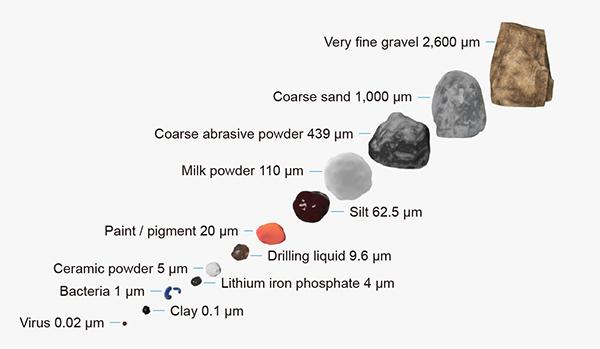
2.2 High Resolution
The Bettersizer 2600 is capable of distinguishing different samples with varying particle sizes within a single measurement due to its high-resolution analysis ability.
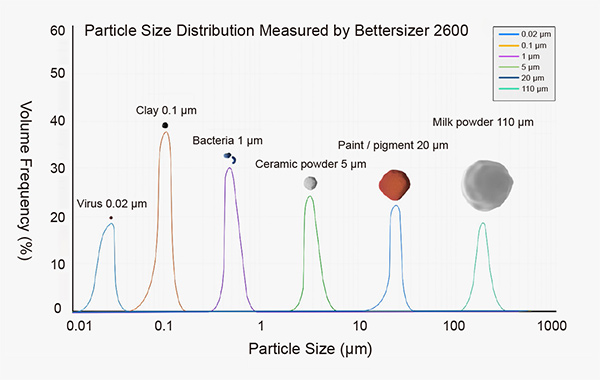
2.3 High Sensitivity
When gradually adding one sample to the other, the Bettersizer 2600 displays the change of particle size distributions in the curve, verifying its excellent sensitivity.
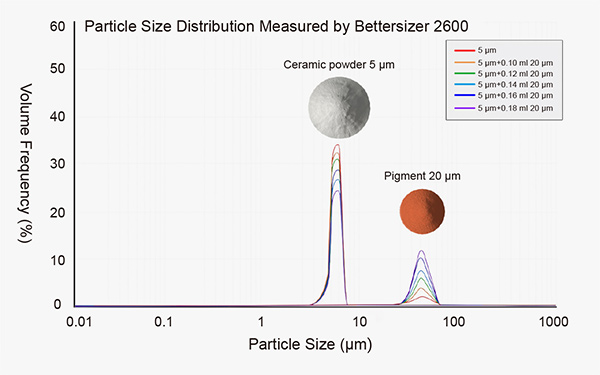
Dynamic Imaging System
1. PIC-1: Modular Dual-Camera Imaging System Design
The PIC-1 features a dual-camera dynamic imaging system, making it a leading dynamic imaging module that seamlessly integrates with the Bettersizer 2600. As the dispersion system transports particles through the sample cell, the high-speed cameras capture and convert images to digital format for real-time analysis. Going beyond mere particle size distribution, this capability allows scientists, researchers, and engineers to utilize particle shape characteristics for a deeper understanding of particles.
Dual-Camera Imaging System
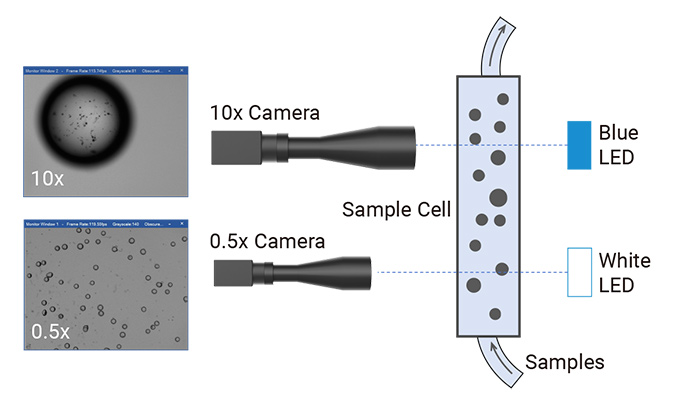
2. Broadened Insight with Modular Imaging Expertise
2.1 Extended Measurement Range
The seamless combination of laser diffraction and image analysis broadens the measurement range of Bettersizer 2600 to an impressive 3,500 µm. Samples with extremely broad distributions are now possible to measure, such as river sediment.
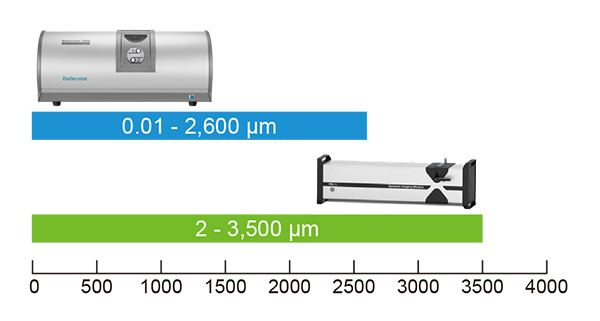
2.2 24 Detailed Particle Parameters
The PIC-1 offers comprehensive data by capturing real-time particle images, allowing customers to study individual particles in detail. With the ability to analyze 24 particle size and shape parameters, the PIC-1 provides an in-depth understanding of particle characteristics.
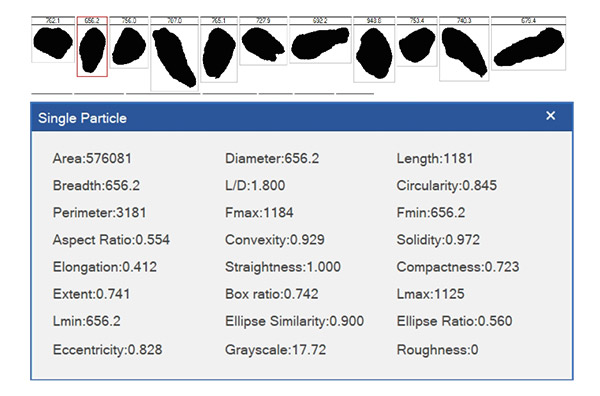
2.3 Oversized Particle Detection for Powder Consistency
The combination of laser diffraction and image analysis can sensitively detect oversized particles that are statistically underrepresented within a wide-distributed sample, such as oversized grain, agglomerates, air bubbles, etc.
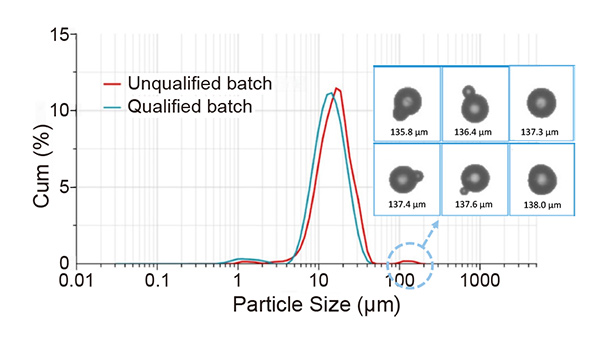
Accessory
Imaging Analysis Module
Autoampler
Wet Dispersion Modules
Dry Dispersion Modules
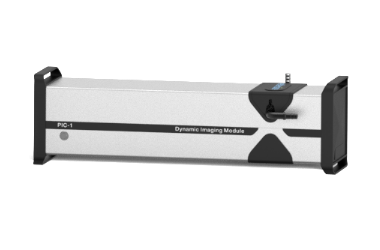
PIC-1
The PIC-1 dynamic imaging module is a versatile and comprehensive dynamic image analysis instrument, designed for seamless integration with the Bettersizer 2600 laser particle size analyzer and the wet dispersion system. It primarily comprises two high-speed cameras, white and blue LED lights, and a sample cell, among other components. Utilizing dynamic image analysis, the PIC-1 precisely captures high-resolution images of particles in real time as they flow through the sample cell, allowing for detailed analysis of both particle size distribution and shape characteristics.
Citations
- Bettersizer 2600
Functional redundancy as an indicator for evaluating functional diversity of macrobenthos under the mussel raft farm near Gouqi Island
DOI: 10.1016/j.aquaculture.2023.740024 Read ArticleZhejiang Ocean University | 2024Biological traits analysis (BTA) helps to evaluate the effects of different environmental variables on the traits-based functional composition of macrobenthos. However, research on functional traits of macrobenthos under mussel farming is limited. We investigated the spatial and temporal response of the benthic system in terms of taxonomic and functional diversity to environmental variables of farming and natural stressors resulting from suspended mussel farming near Gouqi Island of eastern China Sea. The functional traits of macrobenthic assemblages under mussel farming were characterized by “medium adult body size”, “vermiform body form”, “high flexibility”, “infauna”, “semi-motile”, “gonochoristic”, “surface deposit-feeders”, “carnivores”, “semi-motile burrowers”, and “tube-dwellers”. Functional redundancy was stable in response to mussel farming stresses among seasons, whereas species diversity showed efficient to evaluate natural variables. Functional diversity was significantly affected by farming stressors rather than natural variables, Further analysis using multivariate methods together with continuous monitoring were highlighted to evaluate the impacts of mussel farming. Our results reinforce the importance of macrobenthic species and functional traits analysis to evaluate human stresses driven impacts in offshore ecosystems. By analysing the environmental variables with different sources, independently, we concluded the main effects of human pressures on macrobenthic community. Such distinction could be particularly effective to isolate variable environmental descriptors and evaluate their effects on functional diversity, making the current approach promising for the evaluation of ecological effects of anthropogenic stressors in aquaculture areas. - Bettersizer 2600
Degradation characteristics and utilization strategies of a covalent bonded resin-based solid amine during capturing CO2 from flue gas
DOI: 10.1016/j.seppur.2023.125621 Read ArticleChina University of Petroleum | 2024In this study, various types of degradation as well as attrition which are possibly encountered in a circulating fluidized bed temperature swing adsorption (CFB-TSA) process, were conducted experimentally to evaluate the stability of a resin-based solid amine sorbent. Other characterizations methods, such as elemental analysis (EA), Fourier transform infrared spectroscopy (FTIR) etc. were applied to further reveal the degradation mechanisms. The results showed that thermal degradation occurs from 140–160 °C due to the decomposition of amine group. The CO2-induced degradation occurs from a higher temperature of 160–180 °C accompanied by the production of urea. Hydrothermal stability is good below 130 °C, but the ionic impurities in steam crystalized on particle surface can accelerate the degradation. Oxidative degradation is the most harmful, which starts at a lower temperature of 70–80 °C with the formation of aldehyde. The existence of H2O in atmosphere can alleviate the oxidative and CO2-induced degradations. The employed sorbent has a very low attrition index of 0.05, which is 1–2 orders lower than typical commercial fluidized bed catalysts. Based on the results of stability evaluation, some design suggestions for proper utilization of this sorbent or other similar resin-based sorbents have been provided in an industrial CFB-TSA process.
- Bettersizer 2600
De-branching of starch molecules enhanced the complexation with chitosan and its potential utilization for delivering hydrophobic compounds
DOI: 10.1016/j.foodhyd.2023.109498 Read ArticleShihezi University | 2024The current study aimed to prepare the complexes between debranched-waxy corn starch and chitosan polymers (DBS-CS), and then investigated their corresponding structural characteristics, rheological property and potent application in Pickering emulsion. The results indicated that the existence of chitosan significantly inhibited starch short-range molecular rearrangement for all DBS-CS samples, which was manipulated by both debranching treatment and chitosan content. Interestingly, this is the first study to reveal that the outstanding peak at 1.8 ppm in 1H NMR spectrum for sample DBS-CS was gradually shifted towards a lower-field region following an increased chitosan content. Moreover, the debranching treatment shifted the crystallinity pattern from A-type to B-type and the relative crystallinity of DBS-CS decreased gradually with the increased content of CS. All samples had a pseudoplastic fluid and shear-thinning behavior with an enhanced shear resistance following the complexation. The DBS-CS was applied in a Pickering emulsion for showing a greater emulsifying stability and a lower gel strength than native NS-CS prepared emulsion. Importantly, the encapsulation ability of curcumin in the DBS-CS emulsion was significantly improved, followed by an increase of 15.45% for its corresponding bioavailability compared to the control. Therefore, this study might highlight a potential carrier for delivering the bioactive substances in a green pattern. - Bettersizer 2600
Heat-induced aggregation behavior of wheat gluten after adding citrus pectin with different esterification degree
DOI: 10.1016/j.foodhyd.2023.109420 Read ArticleGansu Agricultural University | 2024Wheat gluten aggregation during heat treatment is beneficial to the final quality of gluten-based products. Exogenous pectin can affect gluten aggregation. However, the effect of pectin with different degrees of esterification on the heat-induced aggregation behavior of gluten and its possible mechanism are still unclear. Thus, the heat-induced aggregation behavior of gluten after adding pectin with different esterification degree was studied in this study. When the temperature was raised from 25 °C to 95 °C, pectin affected gluten aggregation and was related to the degree of esterification. Specifically, the results of rheological properties and particle size indicated that low-ester pectin improved the viscoelasticity of gluten and promoted gluten aggregation. Thermal properties revealed that enthalpy of gluten added with low-ester pectin (37%) increased from 92.96 J/g to 95.40 J/g during heating process. Structurally, the fluorescence intensity and surface hydrophobicity of gluten added with low-ester pectin (37%) were lower than those added with high-ester pectin (73%). In addition, low-ester pectin (37%) significantly increased the disulfide bond content (from 15.31 μmol/g to 18.06 μmol/g) and maintained β-sheet content of gluten compared with gluten alone at 95 °C, indicating that low-ester pectin was more likely to induce gluten aggregation. However, scanning electron microscope showed that the gluten added with low-ester pectin (46%) exhibited a denser network structure at 95 °C than that added with low-ester pectin (37%). These results will provide a theoretical base for the regulation of gluten aggregation and the quality of gluten-based products by pectin with different esterification degree.
- 1
- 2
- 3
- 4
- 5
- 6
- 84
Curated Resources
Testimonials


Related Particle Size Analyzer
-
Bettersizer S3 Plus
Particle Size and Shape Analyzer
Measurement range: 0.01 - 3,500μm (Laser System)
Measurement range: 2 - 3,500μm (Image System)
-
Bettersizer ST
One-stop Particle Size Analyzer
Dispersion type: Wet
Measurement range: 0.1 - 1,000µm
Repeatability: ≤1% variation
-
BT-Online1
Online Particle Size Analyzer
Dispersion type: Dry
Measurement range: 0.1 - 1,000μm
Accuracy: ≤1% (D50 of certified reference material)
-
BeScan Lab
Stability Analyzer
Particle size ranges from 10 nm to 1 mm
Volume fraction up to 95%
Compliance with ISO/TR 18811, 13097, 21357, 22107

